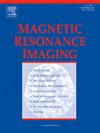Use of deep learning-accelerated T2 TSE for prostate MRI: Comparison with and without hyoscine butylbromide admission
IF 2.1
4区 医学
Q2 RADIOLOGY, NUCLEAR MEDICINE & MEDICAL IMAGING
引用次数: 0
Abstract
Objective
To investigate the use of deep learning (DL) T2-weighted turbo spin echo (TSE) imaging sequence with deep learning acceleration (T2DL) in prostate MRI regarding the necessity of hyoscine butylbromide (HBB) administration for high image quality.
Methods
One hundred twenty consecutive patients divided into four groups (30 for each group) were included in this study. All patients received a T2DL (version 2022/23) and a conventional T2 TSE (cT2) sequence on an implemented 3 T scanner and software system. Group A received cT2 with HBB compared to T2DL without HBB with a field of view (FOV) of 130 mm and group B with a FOV of 160 mm. Group C received both sequences with a FOV of 160 mm plus HBB and group D without HBB. Two radiologists independently evaluated all imaging datasets in a blinded reading regarding motion, sharpness, noise, and diagnostic confidence. Furthermore, we analyzed quantitative parameters by calculating edge rise distance (ERD), signal-to-noise-ratio (SNR), and contrast-to-noise-ratio (CNR). Friedman test was used for group comparisons.
Results
Baseline characteristics showed no significant differences between groups A-D. After HBB cT2 showed less motion artifacts, more sharpness, and a higher diagnostic confidence than T2DL, though DL sequences had significantly lower noise (p < 0.01). Quantitative analysis revealed higher SNR and CNR for T2DL sequences (p < 0.01), while edge rise distance (ERD) remained similar. Inter-reader agreement was good to excellent, with ICCs ranging from 0.84 to 0.93. T2DL acquisition time was significantly lower than for cT2.
Conclusions
In our study, cT2 sequences with HBB showed superior image quality and diagnostic confidence while the T2DL sequence offer promising potential for reducing MRI acquisition times and performed better in quantitative measures like SNR and CNR. Additional studies are required to evaluate further adjusted and developed DL applications for prostate MRI on upcoming scanner generations and to assess tumor detection rates.
使用深度学习加速T2 TSE进行前列腺MRI:与不使用丁溴海莨菪碱的比较。
目的:探讨深度学习(DL) t2加权涡轮自旋回波(TSE)成像序列与深度学习加速(T2DL)在前列腺MRI中的应用,探讨丁基溴海辛(HBB)对高图像质量的必要性。方法:连续120例患者分为4组,每组30例。所有患者在实施的3 T扫描仪和软件系统上接受T2DL(2022/23版本)和传统T2 TSE (cT2)序列检查。A组接受cT2伴HBB组与不伴HBB组相比,视场(FOV)为130 mm, B组为160 mm。C组和D组分别接受视场为160 mm加HBB和不加HBB的序列。两名放射科医生在盲法阅读中独立评估了所有关于运动、清晰度、噪声和诊断信心的成像数据集。此外,我们通过计算边缘上升距离(ERD)、信噪比(SNR)和噪声对比比(CNR)来分析定量参数。组间比较采用Friedman检验。结果:A-D组间基线特征无显著差异。与T2DL相比,HBB后cT2显示出更少的运动伪影、更高的清晰度和更高的诊断置信度,尽管DL序列的噪声明显更低(p )。结论:在我们的研究中,cT2序列与HBB相比显示出更好的图像质量和诊断置信度,而T2DL序列在减少MRI采集时间和定量测量(如信噪比和CNR)方面表现更好。需要进一步的研究来评估在即将到来的扫描仪上进一步调整和发展前列腺MRI的DL应用,并评估肿瘤检出率。
本文章由计算机程序翻译,如有差异,请以英文原文为准。
求助全文
约1分钟内获得全文
求助全文
来源期刊

Magnetic resonance imaging
医学-核医学
CiteScore
4.70
自引率
4.00%
发文量
194
审稿时长
83 days
期刊介绍:
Magnetic Resonance Imaging (MRI) is the first international multidisciplinary journal encompassing physical, life, and clinical science investigations as they relate to the development and use of magnetic resonance imaging. MRI is dedicated to both basic research, technological innovation and applications, providing a single forum for communication among radiologists, physicists, chemists, biochemists, biologists, engineers, internists, pathologists, physiologists, computer scientists, and mathematicians.
 求助内容:
求助内容: 应助结果提醒方式:
应助结果提醒方式:


